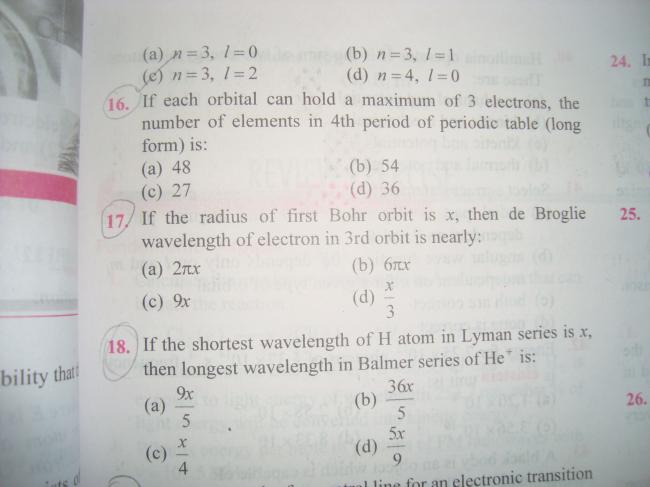16,17,18
6 Answers
17. radius of first Bohr orbit is x (im assuming H-atom)
wavelength of third orbit,
λ=h/mv3
=> mv3 = h/λ
now, mv3r3 = 3h/2Î
so, r3/λ = 3/2Π... (i)
Now r is directly proportional to n2/Z.
=> r3/x = 32 = 9
=> r3 = 9x
using this in (i), 9x/λ = 3/2Î
=> λ = 6xÎ
18. shortest wavelength occurs when transition occurs from ∞
So, shortest lyman wavelength 1λ = R
=> x = 1/R ... (i)
Longest wavelength occurs when transition takes place frm just above excited state to the prev, state,
So, longest Balmer wavelength for He+
1λ = 4R(122-132)
=> 1/λ = 5R/9
=> λ = 9/5R = 9x/5
c there are 9 orbitals to be filled up in period 4....so,acc to d ques each orbital can hold 3 electrond ...so number of elements are 3*9=27
